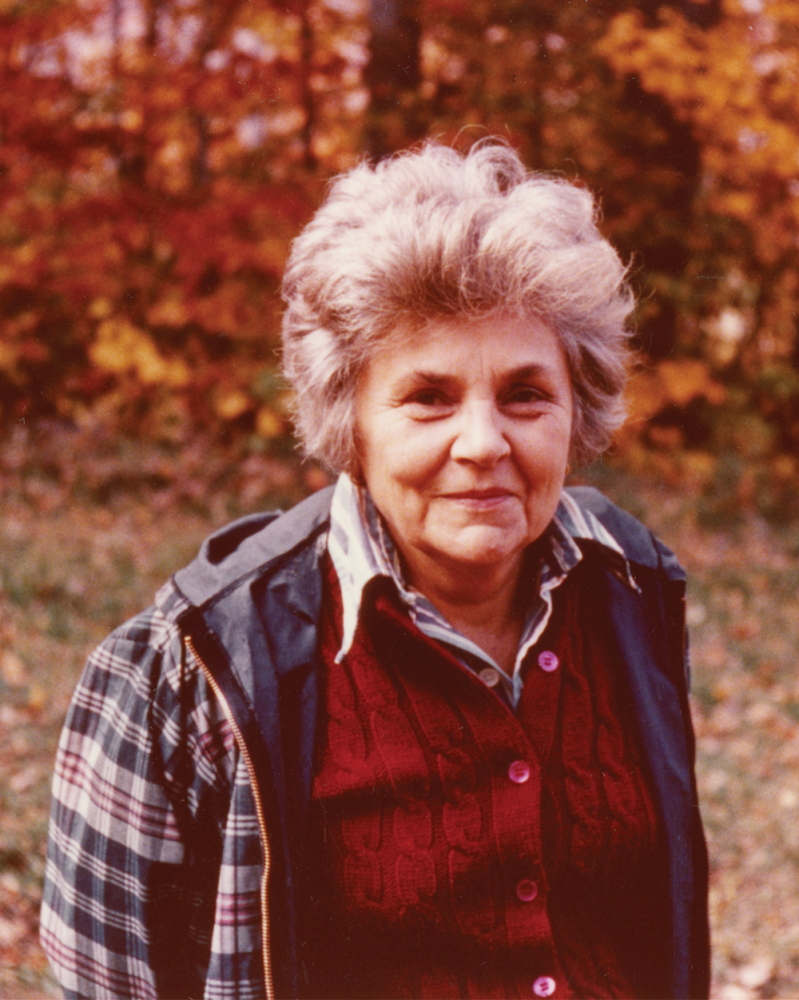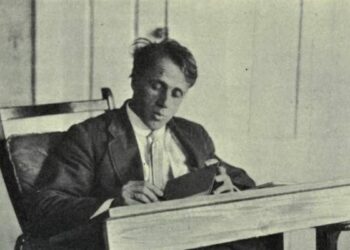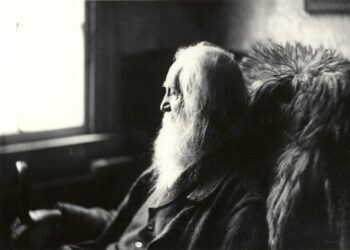In the Waiting Room Poem Summary Line by Line
Elizabeth Bishop tackles themes of identity, time passing, and self-awareness in her poem In the Waiting Room. The young girl who is speaking is waiting for her aunt to get a dental appointment.
In the Waiting Room Poem Summary Line by Line-Reading a National Geographic magazine makes her very conscious of the world around her and herself. The poem is renowned for examining the point at which an individual realizes their own identity and mortality.
In the Waiting Room Poem
In Worcester, Massachusetts,
I went with Aunt Consuelo
to keep her dentist’s appointment
and sat and waited for her
in the dentist’s waiting room.
It was winter. It got dark
early. The waiting room
was full of grown-up people,
arctics and overcoats,
lamps and magazines.
My aunt was inside
what seemed like a long time
and while I waited I read
the National Geographic
(I could read) and carefully
studied the photographs:
the inside of a volcano,
black, and full of ashes;
then it was spilling over
in rivulets of fire.
Osa and Martin Johnson
dressed in riding breeches,
laced boots, and pith helmets.
A dead man slung on a pole
–“Long Pig,” the caption said.
Babies with pointed heads
wound round and round with string;
black, naked women with necks
wound round and round with wire
like the necks of light bulbs.
Their breasts were horrifying.
I read it right straight through.
I was too shy to stop.
And then I looked at the cover:
the yellow margins, the date.
Suddenly, from inside,
came an oh! of pain
–Aunt Consuelo’s voice–
not very loud or long.
I wasn’t at all surprised;
even then I knew she was
a foolish, timid woman.
I might have been embarrassed,
but wasn’t. What took me
completely by surprise
was that it was me:
my voice, in my mouth.
Without thinking at all
I was my foolish aunt,
I–we–were falling, falling,
our eyes glued to the cover
of the National Geographic,
February, 1918.
I said to myself: three days
and you’ll be seven years old.
I was saying it to stop
the sensation of falling off
the round, turning world.
into cold, blue-black space.
But I felt: you are an I,
you are an Elizabeth,
you are one of them.
Why should you be one, too?
I scarcely dared to look
to see what it was I was.
I gave a sidelong glance
–I couldn’t look any higher–
at shadowy gray knees,
trousers and skirts and boots
and different pairs of hands
lying under the lamps.
I knew that nothing stranger
had ever happened, that nothing
stranger could ever happen.
Why should I be my aunt,
or me, or anyone?
What similarities–
boots, hands, the family voice
I felt in my throat, or even
the National Geographic
and those awful hanging breasts–
held us all together
or made us all just one?
How–I didn’t know any
word for it–how “unlikely”. . .
How had I come to be here,
like them, and overhear
a cry of pain that could have
got loud and worse but hadn’t?
The waiting room was bright
and too hot. It was sliding
beneath a big black wave,
another, and another.
Then I was back in it.
The War was on. Outside,
in Worcester, Massachusetts,
were night and slush and cold,
and it was still the fifth
of February, 1918.
In the Waiting Room Poem Summary
Line 1-5: The poem begins with the speaker’s acknowledgment of her age, being seven years old. She sets the scene by describing the waiting room in a dentist’s office. The mention of “February, 1918” provides a specific historical context, creating a sense of time and setting.
Line 6-15: The speaker’s attention is drawn to a picture in the National Geographic magazine. The image is of a volcano erupting in the Philippines, and the speaker is captivated by the visual representation of the event. This moment serves as a catalyst for the speaker’s self-awareness, as she realizes that the people in the picture are “not going to die.”
Line 16-23: As the speaker contemplates the age and experiences of the people in the magazine, she becomes aware of her own individuality. She recognizes the differences between herself and the adults in the waiting room. This realization marks a significant moment in the speaker’s understanding of her place in the world.
Line 24-30: The speaker reflects on the changes that come with age, noting the physical transformations and the acquisition of knowledge. The mention of “wrinkled fingers” and “thickened earlobes” suggests the inevitability of aging, emphasizing the transient nature of life.
Also Read-
- Theme for English B Poem Summary Line by Line
- The Negro Speaks of Rivers Poem Summary Line by Line
- On Living Poem Summary Line by Line
Line 31-39: The speaker further explores the concept of time by considering her own future. She imagines herself growing older, experiencing various stages of life, and eventually facing death. The poem delves into existential themes, prompting the reader to reflect on the universal aspects of the human experience.
Line 40-45: The poem takes a turn as the speaker’s thoughts shift to her immediate surroundings. She becomes aware of the mundane details in the waiting room, such as the receptionist’s voice and the ticking clock. This transition highlights the contrast between the profound existential reflections and the ordinary, everyday aspects of life.

Line 46-52: The speaker’s heightened awareness extends to her own body, and she experiences a moment of discomfort and embarrassment. She recognizes the physicality of being human, particularly in relation to the differences between genders. This realization adds another layer to her understanding of identity.
Line 53-60: The speaker grapples with the concept of language and its limitations in expressing her thoughts and emotions. She acknowledges the difficulty of articulating complex ideas and the isolating nature of inner experiences. This introspective moment adds depth to the poem’s exploration of self-awareness.
Line 61-68: The poem concludes with the speaker’s return to the waiting room, where she is surrounded by other individuals engaged in their own activities. The experience of self-discovery has changed her perception of the world around her, and she is now more attuned to the lives and experiences of those sharing the same space.
Conclusion
A testament to the ability of poetry to capture fleeting moments of profound self-awareness and existential reflection is Elizabeth Bishop’s In the Waiting Room. Bishop asks readers to consider the universal themes of identity, mortality, and the passing of time via the perspective of a seven-year-old girl’s experience in a dentist’s waiting room. The poem deftly blends the extraordinary with the commonplace, giving seemingly insignificant details multiple levels of significance.
In the Waiting Room Poem Summary Line by Line-The young protagonist’s awakening to the complexity of life is sparked by a volcano eruption in the Philippines, which she discovers while engrossed in a National Geographic magazine. The speaker’s reflective journey strikes a deeply human chord with readers as they consider the lives of those featured in the magazine and wrestle with the certainty of aging and death. Inspiring readers to reflect on their own self-discovery moments, Bishop’s poignant narrative transcends the particular context of the waiting room thanks to her precise language and evocative imagery.
In the Waiting Room Poem Summary Line by Line-“In the Waiting Room” is a meditation on the fragility of existence and the interconnectedness of human experiences. The poem encourages readers to confront the limitations of language in expressing inner thoughts and emotions while highlighting the transformative power of self-awareness. Bishop’s exploration of the ordinary moments that shape our understanding of life serves as a reminder of the significance inherent in seemingly trivial encounters.
FAQ:
1. Why is the mention of “February, 1918” significant in the poem?
The mention of “February, 1918” provides a specific historical context, grounding the poem in a particular moment in time. This detail serves to anchor the reader in the past, offering a backdrop against which the speaker’s reflections on identity and mortality unfold. The historical reference prompts contemplation of the continuity of human experience and the ways in which individuals, despite temporal and cultural differences, grapple with universal themes.
2. How does the volcanic eruption image impact the speaker’s self-awareness?
The image of the volcanic eruption serves as a catalyst for the speaker’s heightened self-awareness. It prompts her to recognize the existence of a world beyond her immediate surroundings and triggers reflections on the fragility of life. The realization that the people in the magazine are “not going to die” marks a pivotal moment in the speaker’s understanding of mortality, sparking a contemplative journey that extends beyond the waiting room.
3. How does Bishop address the theme of language in the poem?
Bishop addresses the theme of language by acknowledging its limitations in expressing complex emotions and existential thoughts. The speaker reflects on the difficulty of articulating inner experiences, highlighting the isolating nature of individual consciousness. This introspective exploration of language adds a layer of complexity to the poem, inviting readers to consider the challenges of communicating profound emotions and insights.
4. What role does the waiting room setting play in the poem?
The waiting room setting serves as the backdrop for the speaker’s moment of self-discovery. It represents a transitional space where the ordinary and the extraordinary intersect. The mundane details of the waiting room, such as the receptionist’s voice and the ticking clock, contrast with the profound reflections triggered by the magazine image. This juxtaposition underscores the idea that moments of self-awareness can emerge unexpectedly in the midst of routine and commonplace surroundings.

















